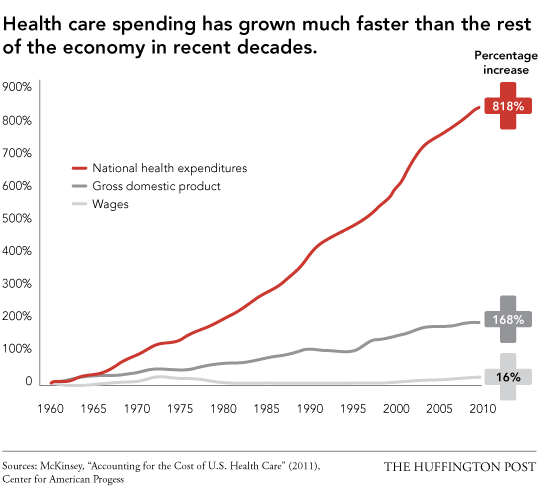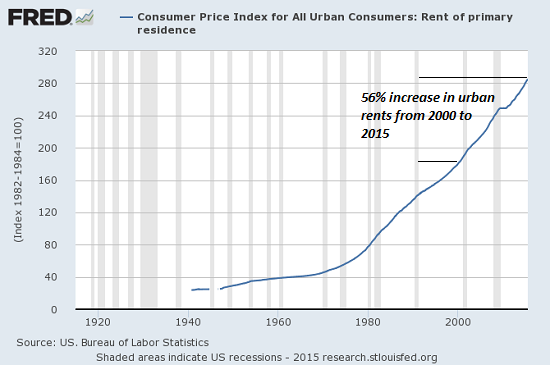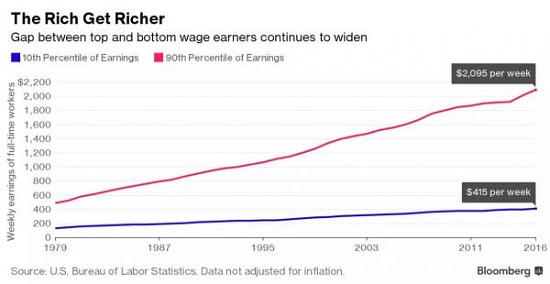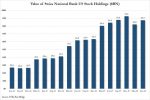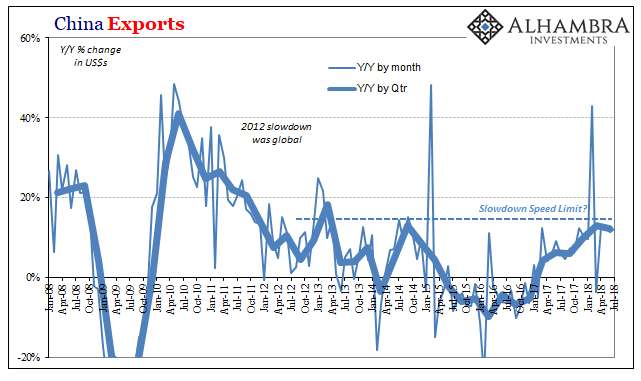The pharmaceutical cartel jacks up medication costs per dose from $3 tp $600, even when the medication has been around for decades: the Pinworm prescription jumps from $3 to up to $600 a pill Parents, doctors angry over drug price gouging (via John F.)
My father paid 1.8% of his wages for “hospital group insurance” in the early 1950s (for a household of four kids and two adults.) For someone earning $1,000 a week, the equivalent today would be $72 a month out of a monthly gross income of $4,000.
My spouse and I pay $1330 a month for barebones healthcare insurance in today’s sickcare system. Factor out subsidies paid by the employer or state, and minimal healthcare insurance costs tens of thousands of dollars per household annually.
Here’s a chart that illustrates the breathtaking rise in healthcare costs. Wages are the nearly flat line:
|
|
|
In the early to mid-1970s, my university tuition was $89.25 per semester (the University of Hawaii was a two-semester system), and student fees were $27 a semester, for a grand total of $232.50 per year. Books added another $170 per year, for a total cost of $400 to $450 for a university education.
$1 in 1975 = $5.51 today, so if tuition, fees and books had gone up along with official inflation, it would now cost $1,800 to $2,000 to attend a large state university annually–including tuition, fees and books.
An entire 4-year university education would cost $8,000. Instead, students now borrow $50,000 and up just to attend state university.
|
|
|
I’ve covered the skyrocketing cost basis of everyday life for a decade:
Lowering the Cost Structure of the U.S. Economy (August 29, 2008)
My recent exploration of soaring costs for everyday items, The Burrito Index: Consumer Prices Have Soared 160% Since 2001 (August 1, 2016), received quite a bit of interest, along with the companion piece on the source of much of the higher costs: Inflation Hidden in Plain Sight (August 2, 2016) Can we be honest and say that many of the reductions in value, quantity and quality are actually instances of fraud?
Here’s a snapshot of urban rents. Recall that wages for the bottom 90% have been flatlined for decades.
|
|
|
Apologists claim these services have improved greatly in the past 30, 40 and 50 years, but this is only occasionally valid; university education, housing, burritos and conventional preventative care have often declined in quality and quantity, not gotten better.
Other apologists claim that Baumol’s Cost Disease explains all these tremendous increases in price; while this may be a factor in some price increases, it is more an excuse than an explanation.
Here’s what’s going on: cartels that have government backing can jack up prices at will, year after year, decade after decade, while wages have stagnated. Cartels have zero pressure to raise wages, while their immense profits fund vast propaganda/public-relations machines that translate into equally vast political influence.
|
Strip away the centralized power that protects and funds cartels, and prices would plummet. I explain how this would work in higher education in my book The Nearly Free University and the Emerging Economy: The Revolution in Higher Education. The same dynamics would radically transform the cost structure of housing, healthcare, defense and everything else currently controlled by monopolies or cartels.
Tags: newslettersent









